Occupational Dermatoses
NOTE: This page is archived for historical purposes and is no longer being maintained or updated.
Slides 31 to 35
Slide 31 - Absolute irritant, buttocks
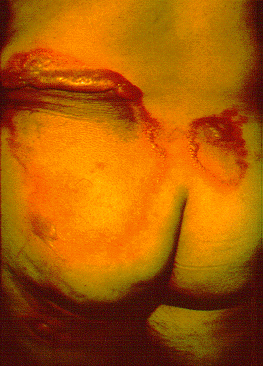
After this gardener accidently sprayed an insecticide-solvent mixture on his overalls, he failed to change immediately. It resulted in first and second degree chemical burns due to the strength of the irritant.
Slide 32 - Irritant alkali
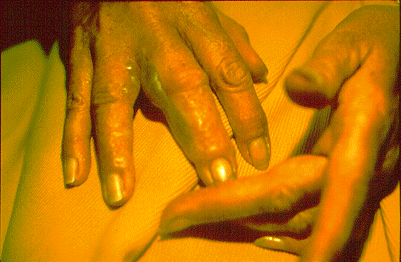
This patient demonstrates the acute responses of the skin to another strong alkaline irritant. Many vesicles are present on the fingers.
Slide 33 - Marginal irritants
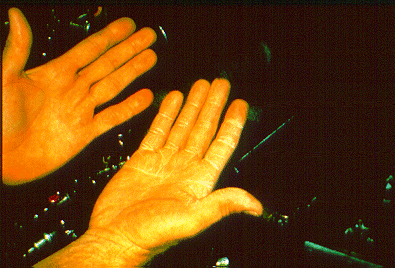
Marginal irritants require repeated contact to produce irritation. This man cleaned the rollers of an offset press with a sponge containing a solvent solution of potassium dichromate. Although he was not allergic to this chemical, it served as an irritant producing this degree of clinical dermatitis.
Slide 34 - Sources of Dermatitis
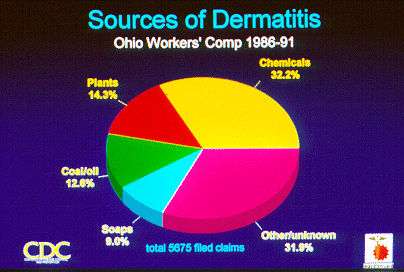
A study of the occupational contact dermatitis cases reported to workers' compensation in Ohio from 1988-1992 shows chemical agents, as a group, to be the most frequent cause. Where available, reports from other states verify this conclusion. Extensive lists of irritants and allergens are available in reference books. The most frequent causes of irritant contact dermatitis include soaps/detergents, fiberglass and particulate dusts, food products, cleaning agents, solvents, plastics and resins, petroleum products and lubricants, metals, and machine oils and coolants. Causes of allergic contact dermatitis include metallic salts, organic dyes, plants, plastic resins, rubber additives, and germicides.
Slide 35 - Alkalies
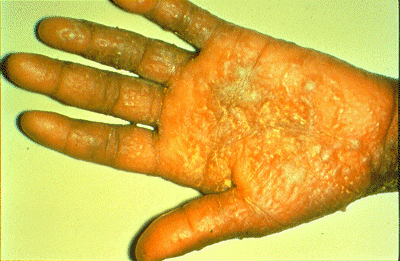
Strong alkalies, such as sodium or potassium hydroxide, are potent keratin solvents and in high concentrations produce the type of caustic burns illustrated here. In lesser concentrations alkalies may produce less severe forms of skin damage. Weak alkaline solutions are particularly insidious marginal irritants and frequent repeated contact may compromise the skin's barrier function resulting in excessive water loss and eczematous dermatitis.
- Page last reviewed: January 5, 1998 (archived document)
- Content source:
- National Institute for Occupational Safety and Health Health Effects Laboratory Division (HELD)


 ShareCompartir
ShareCompartir